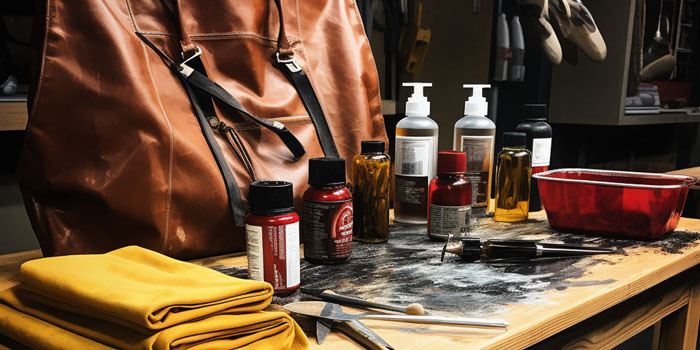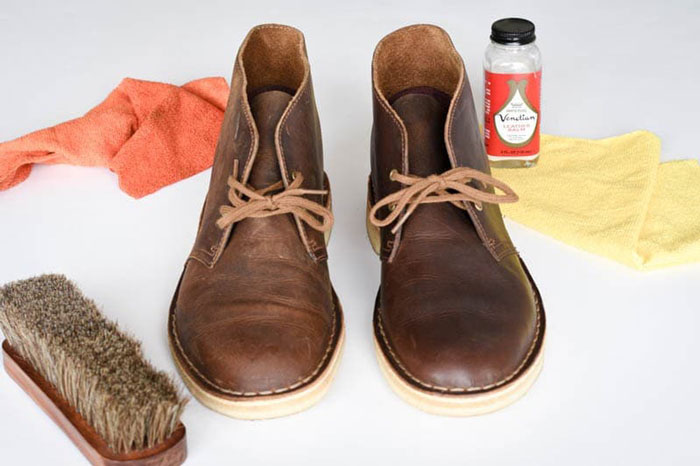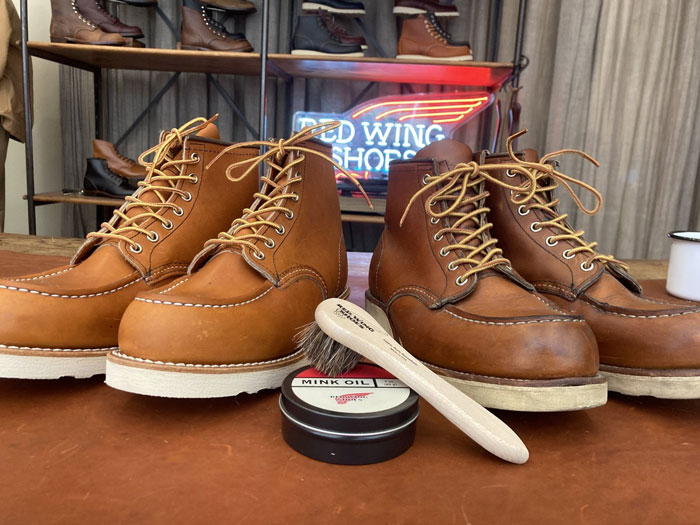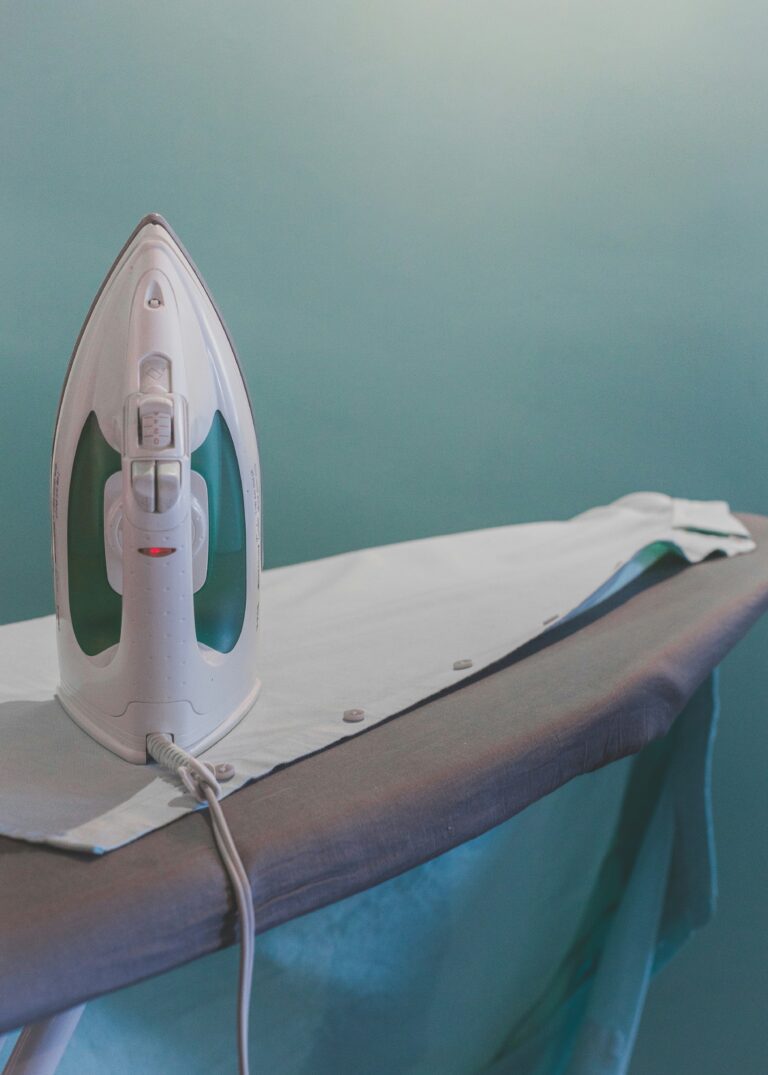How to Darken Leather Naturally: Eco-Friendly Techniques
Leather’s timeless appeal can be enhanced with a touch of darkness, giving your items a sophisticated, vintage look. If your leather pieces seem too bright or new, naturally darkening them might be the perfect solution. This process not only elevates the aesthetic but also helps protect the leather from wear and tear.
Natural darkening methods offer an eco-friendly approach to achieving that rich, aged appearance. By using natural oils like coconut or jojoba oil, you can enrich the leather’s color while maintaining its health. These oils penetrate the surface, providing a subtle sheen and ensuring the leather remains supple.
Before you begin on this transformation, it’s crucial to prepare your leather properly. A thorough cleaning and drying process sets the stage for an even darkening effect. With patience and the right techniques, you’ll breathe new life into your leather items, keeping them looking great for years to come.
Key Takeaways
- Natural Darkening Benefits: Darkening leather using natural methods enhances its aesthetics, increases durability, and preserves the material’s integrity without harmful chemicals.
- Preparatory Measures: Proper cleaning and conditioning before darkening ensure an even color application and maintain the leather’s suppleness.
- Natural Darkening Techniques: Oils like coconut, olive, and neatsfoot effectively darken leather, while options like coffee and sunlight offer alternative eco-friendly methods.
- Eco-Friendly Solutions: Using natural agents aligns with sustainable practices, offering a biodegradable and healthier option to chemical dyes.
- Maintenance and Care: Regular cleaning, conditioning, and protection against environmental factors preserve the darkened leather’s appearance and longevity.
Why Darken Leather Naturally
Darkening leather using natural methods enhances both its aesthetic and functional qualities. This approach offers unique styles and avoids harmful chemicals, ensuring a sustainable and eco-friendly choice.

Benefits of Natural Darkening
- Unique Style and Appearance: Natural darkening methods give each leather piece a distinctive look. Subtle variations in shade and texture add character, setting naturally darkened leather apart from uniformly dyed versions.
- Enhanced Durability: Natural oils and conditioners not only change leather’s color but also nourish and protect it. This treatment makes the leather supple and resistant to cracking, improving its longevity.
- Preservation of Integrity: By maintaining the leather’s natural properties, these methods help preserve the quality and integrity of the material over time.
- Avoiding Chemical Dyes: Natural darkening methods bypass harmful chemicals, minimizing environmental impact and preventing potential damage to the leather.
- Sustainability: Using oils, coffee, or walnut hulls aligns with sustainable practices. These materials are biodegradable, reducing ecological footprint and promoting eco-friendly craftsmanship.
- Healthier Options: Without chemical exposure, the risk of skin irritation or allergic reactions is diminished, making these methods safer for personal use.
Incorporating natural darkening techniques not only supports environmental sustainability but also contributes to the unique and lasting appeal of your leather essentials.
Preparations Before Darkening Leather
To ensure the process of naturally darkening leather is effective, taking preparatory measures is essential. This not only enhances the outcome but also protects the leather’s integrity.

Cleaning and Conditioning
Cleaning leather thoroughly before darkening prevents dirt or debris from affecting results. Use a dry microfiber or horsehair brush to gently remove surface contaminants. If needed, apply a small amount of mild leather cleaner on a damp cloth, such as saddle soap, to clean more thoroughly. Ensure the leather is dry afterward to avoid uneven darkening or potential mold formation.
Conditioning ensures leather maintains its health and better absorbs darkening agents. Gently rub a small amount of leather conditioner or natural oils like olive or coconut oil into the leather with a clean cloth. This step moisturizes and prepares the leather for darkening.
Conducting a Patch Test
Performing a patch test ensures that the chosen darkening agent won’t adversely affect the leather’s color or texture. Apply a small amount of the darkening product to a hidden area of the leather. Observe for any unwanted reactions or color changes. This precaution helps maintain the leather’s aesthetic and structural quality.
Natural Methods to Darken Leather
Darkening leather naturally is an eco-friendly way to enhance its appearance. These methods not only impart a rich color but also improve leather’s durability and feel.

Using Natural Oils
Natural oils effectively darken leather while providing nourishment. Here’s a guide to the most popular oils:
- Olive Oil: Popular for its ability to give a gentle sheen and enrich leather with moisture. Clean the leather, then apply olive oil in circular motions using a soft cloth.
- Mink Oil: Contains waxes and fats that darken leather significantly. Test on a hidden area first to control the shade.
- Neatsfoot Oil: Known for its conditioning properties, this oil darkens while keeping leather supple. Apply evenly to prevent patchiness.
Before applying any oil, ensure the leather is clean. Conduct a patch test on an inconspicuous area. Post-application, wipe off excess oil and let the leather rest.
Applying Coffee or Tea
Coffee and tea act as natural dyes for leather. Follow these steps for the best outcome:
- Brew a Strong Mixture: Use coffee or black tea to create a dark liquid. Let it cool before application.
- Apply Evenly: Use a cloth to apply, ensuring coverage across the leather to avoid streaks.
- Dry and Reapply: Allow the leather to dry and, if needed, reapply for a deeper color. Testing the strength on a small area first ensures the desired shade is achieved.
Utilizing Sunlight
Sunlight provides a gradual and even darkening effect on leather. For effective results:
- Direct Exposure: Place leather items in indirect sunlight. Rotate them regularly to prevent uneven darkening.
- Monitor Duration: Natural darkening through sunlight takes time and patience. Monitor progress to avoid overexposure.
- Maintenance: Use a conditioner after sun exposure to keep leather moisturized and prevent fading.
Ensure consistent rotation of the leather item to achieve uniform results. By combining these natural methods, you can achieve a rich, dark patina on leather, enhancing both its aesthetic and functional qualities.
Darkening Leather with Natural Polish
Harness the power of natural polish to darken leather effectively and sustainably. Natural polishes not only enhance color but also offer leather protection and nourishment.

Types of Natural Polish
- Oils:
- Olive oil: Offers a gentle sheen and nourishes leather, increasing suppleness and crack resistance.
- Coconut oil: Provides a pleasant scent, darkens leather, and adds water resistance.
- Mink oil: Contains natural waxes and conditioning agents but might dull leather shine.
- Neatsfoot oil: Maintains color over time and effectively darkens leather.
- Vegetable oils: Use cautiously due to potential odor.
- Waxes:
- Beeswax: Darkens and protects leather. Apply sparingly and buff with a cloth.
- Preparation:
- Ensure leather is free of dirt and debris by cleaning it thoroughly.
- Conduct a patch test to check how the leather reacts to the polish.
- Application:
- Use a soft cloth or brush to apply the chosen polish in thin layers.
- Work in small circles for even coverage across the leather surface.
- Drying:
- Let each layer dry completely before applying the next one to avoid streaks.
- Buff the leather with a clean cloth to bring out shine and enhance darkening.
- Repetition:
- Continue applying layers until reaching the desired darkness.
- Avoid using harsh chemicals that could damage the leather’s integrity.
These steps will ensure that your leather items attain a rich, dark patina while maintaining durability and aesthetics.
Maintenance and Care for Darkened Leather
Ensuring your darkened leather remains vibrant and supple requires consistent maintenance and care. Protecting and conditioning regularly helps prolong the leather’s life and maintains its unique appearance.
Regular Cleaning and Conditioning
Cleaning regularly prevents dirt and grime build-up, which can dull leather’s appearance. Use a soft, dry microfiber cloth to wipe away surface debris. For deeper cleaning, opt for a leather-specific cleaner applied with a horsehair brush, focusing on small sections at a time. Following cleaning, conditioning replenishes the leather’s natural oils and enhances its color depth. Apply a thin layer of natural conditioner, like mink or neatsfoot oil, using a lint-free cloth in circular motions. Let it penetrate for at least an hour, then gently buff to finish.
Protection Against Environmental Factors
Guard leather against environmental stressors like UV rays and moisture to maintain its health and color. Store leather items away from direct sunlight to avoid fading and uneven darkening. Use a quality leather protector, such as a beeswax-based product, to create a barrier against moisture and stains. Ensure leather is dry and clean before application. When leather gets wet, pat gently with a dry cloth and let it air dry naturally to prevent damage. Regular rotation of leather items exposed to sunlight helps achieve even darkening.
Conclusion
Embracing natural methods to darken leather not only enhances its aesthetic appeal but also ensures a sustainable and eco-friendly approach. By using natural oils, coffee, tea, and sunlight, you can achieve a rich patina that highlights the leather’s unique character. Proper preparation and maintenance are key to preserving both the look and longevity of your leather items. Regular cleaning and conditioning with natural products will keep them vibrant and supple. This mindful approach supports environmental sustainability while offering a healthier alternative to chemical dyes. Enjoy the timeless beauty and durability of naturally darkened leather for years to come.
Frequently Asked Questions
How can I naturally darken leather?
To naturally darken leather, use eco-friendly oils like coconut, olive, jojoba, mink, or neatsfoot oil. These oils enrich the leather color while maintaining its health. Additionally, coffee, tea, and sunlight can be used for a unique darkening effect. It’s important to clean and condition the leather before application for the best results.
Is using natural oils on leather safe?
Yes, natural oils are safe for leather when used properly. They enhance the color, protect, and nourish the leather. Always perform a patch test first to ensure that the oil does not adversely affect the leather’s color or texture.
What are the benefits of darkening leather naturally?
Natural darkening methods enhance leather’s aesthetic appeal and functional qualities, offering unique styles and avoiding harmful chemicals. These methods also boost durability, maintain the leather’s integrity, and result in minimal environmental impact compared to chemical dyes, making them healthier options.
How should I prepare leather before darkening it?
Proper preparation involves cleaning and conditioning the leather. Use a dry microfiber or horsehair brush for surface cleaning and a mild leather cleaner if necessary. Conditioning helps the leather absorb darkening agents effectively and ensures even results.
Can sunlight darken leather effectively?
Sunlight can naturally darken leather with careful preparation and exposure. It’s crucial to clean and condition the leather beforehand to achieve even darkening. Control exposure time to prevent damage, ensuring a gradual and uniform color change.
What natural polishes can darken leather?
Natural polishes such as olive, coconut, mink, and neatsfoot oil, as well as beeswax, can effectively darken leather. Apply in thin layers, allowing each to dry completely before adding another. Buff the leather to enhance shine and achieve a rich, dark patina.
How can I maintain darkened leather?
Maintain the vibrancy and suppleness of darkened leather by regular cleaning with a soft microfiber cloth and leather-specific cleaners. Condition with natural oils to replenish oils and enhance color depth, and protect leather from UV rays and moisture by storing items appropriately.







